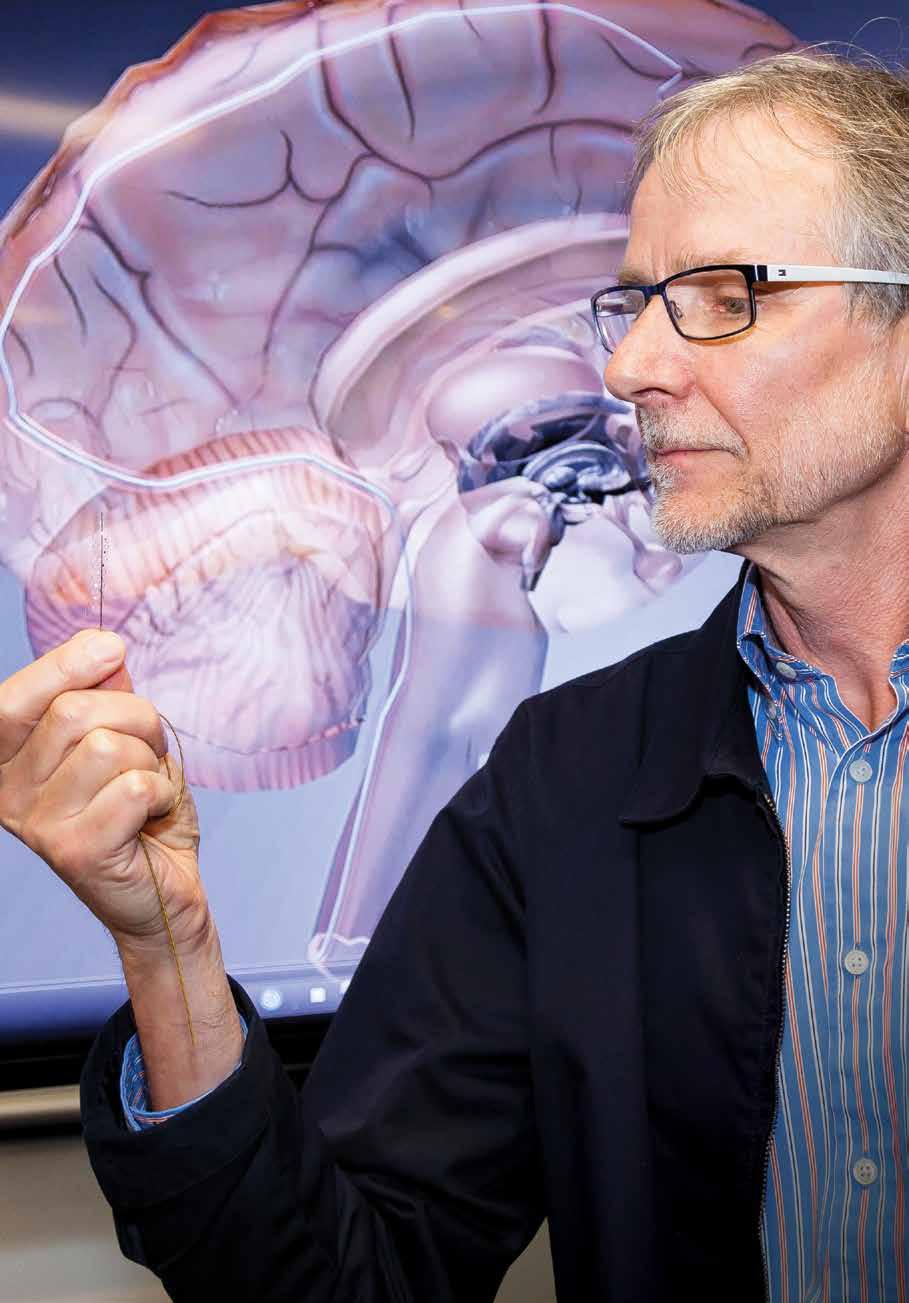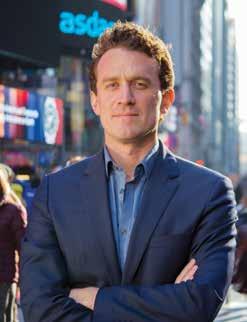
1 minute read
years and IS READY THE STENTRODE to be tested in humans.
Quadriplegics in the human trials will be encouraged to ‘learn to walk and stand again’ by sending signals to their exoskeleton, according to fellow inventor, biomedical engineer Dr Nick Opie. “With our device, you’ve essentially connected an electronic limb to the patient’s brain, but they have to learn how to use it.”
Prof May says the device is well tolerated.
“In fact, the longer the device is in the blood vessel, the better it seems to work. Unlike other devices of the past, this one is not rejected by the brain and is incorporated into the lining of the blood vessel ensuring long-term viability.”
After it has undergone human testing and is ready for market, it is expected the device will be similar in cost to the cochlear implant — around A$15,000 to A$20,000 and will be ready for commercial use by 2022.

It is also hoped the stentrode will be as important to medicine as the cochlear implant, which was invented in Australia.
Professor Terry O’Brien, head of the Department of Medicine at the Royal Melbourne Hospital said the development of the stentrode has been the “holy grail” for research in bionics.
“To be able to create a device that can record brainwave activity over long periods of time, without damaging the brain is an amazing development in modern medicine,” Professor O’Brien said.
Florey Director and neurologist, Professor Geoffrey Donnan, has welcomed the advance and believes it is a great example of the power of collaboration in the Parkville precinct.
“Engineers, neuroscientists, surgeons, doctors and scientists have responded to Dr Oxley’s call. Four years of design, development and testing has delivered us an ingenious stent device which can be implanted in a simple day procedure,” Prof Donnan says.
“The Prime Minister has called on the nation to chase innovation. It’s hard to imagine a more compelling example.
“In just 24 hours, this story had made it around the world, showcasing the amazing work of the Florey, the Royal Melbourne Hospital and the University of Melbourne.”
Following the announcement, there were 200 separate TV and radio reports, seven major printed newspaper reports, and almost 500 online reports, reaching a massive global audience.
You can read the abstract of the Nature Biotechnology paper on www.nature.com/nbt/journal/vaop/ncurrent/full/nbt.3428.html









